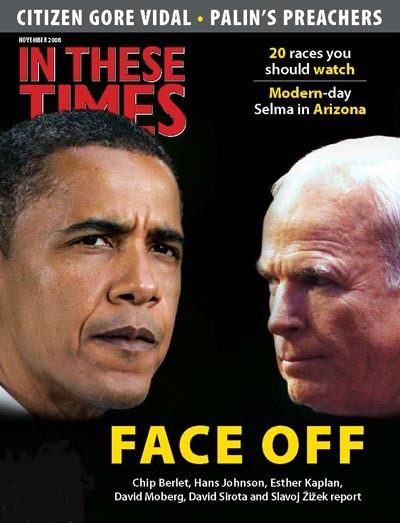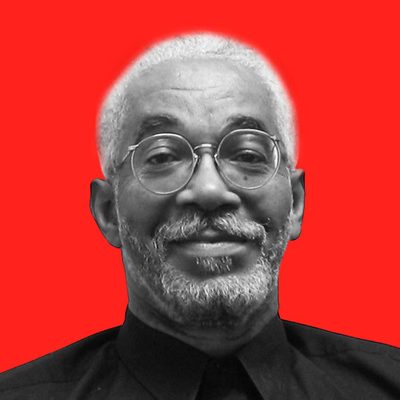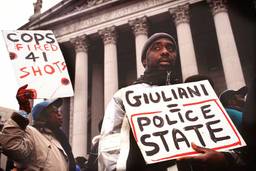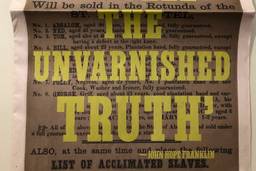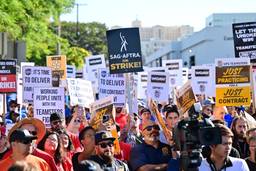Almost unnoticed, Imam W.D. Mohammed died of heart disease and diabetes on Sept. 9 in his modest home in a Chicago suburb. His death received scant attention, which may have reflected Mohammed’s aversion to the spotlight, but it was hardly commensurate with his significance.
Mohammed was one of the nation’s most influential Islamic clerics and strongest advocates of ecumenical unity, urging stronger links between Christians, Jews and Muslims. His Quranic rigor earned the respect of Islamic scholars worldwide, and he was a passionate American patriot.
What’s more, he was a potent influence on the African-American freedom movement, challenging the racial essentialism that rose during the Black Power era and transforming a black nationalist cult into a group advocating racial unity.
Mohammed offered a model of reconciliation on two important fronts: Islamic piety with Western pluralism and U.S. patriotism with black activism. His example provided a lesson for a world struggling with clashing sensibilities, and his passing hurts prospects for progress.
He was born Wallace Delaney Muhammad on Oct. 30, 1933, to Clara Muhammad and the late Elijah Muhammad, leader of the Nation of Islam. When his father died in 1975, Wallace was selected to lead the black supremacist group.
This choice surprised many. Wallace was a rebellious son who had been expelled from the group several times for public apostasy. He was also temperamentally introverted and soft-spoken, seemingly ill suited to lead such a messianic organization. Most observers expected Louis Farrakhan, Elijah’s charismatic national representative, to succeed him.
Nevertheless, within his first year of leadership, Wallace repudiated the most distinctive element of the group’s peculiar catechism: its eugenic theology. White people were no longer said to be the personification of evil, grafted from superior black people through a eugenic process. He eschewed the belief in an anthropomorphic God who “came in the person of Master Fard Muhammad.”
Elijah’s son began phasing out the group’s black nationalist ideology, its paramilitary style of organization and its bourgeois capitalist business model. Some likened him to a mass deprogrammer who lifted the veil of fanaticism.
At the time, the Nation of Islam was the most formidable organization in the black community. Under Elijah, the group ran its own schools, stores, farms and newspaper plant, and it urged black people to distance themselves – at least psychologically – from white America.
While black nationalist ideology ascended, other activist groups sputtered, leaving the Nation of Islam as the most prominent exemplar of the black power ideal. Farrakhan, based in New York, was attracting huge crowds nationwide.
Wallace stopped that momentum and brought the Nation of Islam into theological accord with the tenets of Sunni orthodoxy. Remarkably, he engineered this major transformation without the bloody succession struggles many predicted would follow Elijah Muhammad’s death.
In 1976, Mohammed changed the name of the group to the World Community of al-Islam in the West, and again changed it to the American Muslim Mission two years later. When he resigned in 2003, his group was the American Society of Muslims.
Through all these name changes, he retained the allegiance of tens of thousands of African-American Muslims who were attracted to his unique Quranic interpretations, his inclusive social message and his humble personal style.
He had his enemies, however. Mohammed’s enthusiastic patriotism angered many who believed that the country’s racist traditions made it unworthy of black people’s allegiance. Many condemned him for embracing orthodox Islam and for rejecting black nationalism in favor of integration.
Farrakhan initially went along with the theological changes wrought by his late leader’s son, but soon left to revive the moribund Nation of Islam. The two went in separate directions, occasionally differing over religious fine points and racial ideology. They officially reconciled in 2000, and Farrakhan has slowly moved the race-focused Nation of Islam closer to the Islamic orthodoxy Mohammed espoused.
Mohammed’s value as an Islamic scholar and religious ambassador overshadowed his role in the black freedom movement. He challenged the notion that black supremacy was an appropriate response to white supremacy, and in doing so he changed the face of black activism.

I hope you found this article important. Before you leave, I want to ask you to consider supporting our work with a donation. In These Times needs readers like you to help sustain our mission. We don’t depend on—or want—corporate advertising or deep-pocketed billionaires to fund our journalism. We’re supported by you, the reader, so we can focus on covering the issues that matter most to the progressive movement without fear or compromise.
Our work isn’t hidden behind a paywall because of people like you who support our journalism. We want to keep it that way. If you value the work we do and the movements we cover, please consider donating to In These Times.
Salim Muwakkil is a senior editor of In These Times and host of “The Salim Muwakkil Show” on radio station WVON-AM in Chicago. Muwakkil was also contributing columnist for both the Chicago Sun-Times (1993 – 1997) and the Chicago Tribune (1998 – 2005). He is also a co-founder of Pacifica News’ network daily “Democracy Now” program and served as an adjunct professor at Northwestern University, University of Illinois, the Art Institute of Chicago and Chicago’s Columbia College.
